KashunStudio
The Numbered Rose.
-Review of the solo exhibition of works -
Leung Ka Shun (1922-), Hong Kong actor and politician
Leung kashun
November 30th.
"Numbered Roses - Solo Exhibition by Leung Ka Shun"
At No. 1 Zhongshan 4th Road, Yuexiu District, Guangzhou.
Closing of the BEN Gallery on the fourth floor of the Dong Pyung Great Pawn Museum.
This is the first exhibition of my work in my life.
November 25th.
Opening of the exhibition.
There is no opening ceremony scheduled for that day.
No statements have been scheduled.
Or fear of uncontrolled emotions, I guess.
Honestly.
It's not easy to run a painting show.
Although the exhibition area is just 70 square meters;
There are no more than 10 copies of the work on display.
But.
It's almost everything I've got.
Compared to my blurb.
Perhaps.
Mr. Wong Chung Ho's article.
It can be expressed a little more realistically.
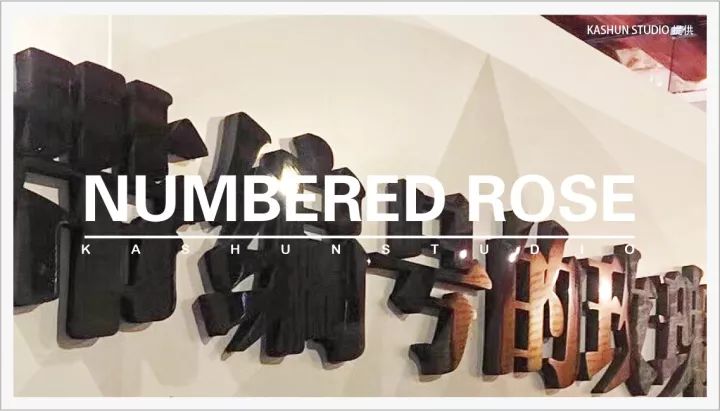
Numbered Roses
Text|Huang Songhao
Art historian Gombrich begins his The Story of Art by stating that there is no such thing as art, only artists.Formerly, colored clay was used to thumbnail the shape of a bison on the stone walls of caves, but now paint is purchased to design advertising paintings for poster boards ......Gunn's discussion makes art tangible. Nowadays, "art" is inundated in every microcosm of society, but it seems to have little to do with us. Artists, as one of the profitable classes of these decades, seem to be more concerned with success, profit, and creating buzz than with the quality of their work, which, sorry to say, is not a concern. ......
It is against this background that Leung Ka Shun is determined to become a concrete artist and create concrete works of art.
Three years ago, Leung Ka Shun used his savings from years of work to do three things: rent a house on Dade Road in Guangzhou; sell his parents' old house in Foshan and buy a new one; and buy a miniature SUV.After these three things, the guy is pretty much penniless. From the outside, he looks like a wandering soul: living away from the crowd, away from popular entertainment, and living with a cat left behind by his ex-girlfriend in Guangzhou, maintaining the simplest way of life. On the other hand, he seems to be enjoying himself, because he can concentrate on one of his favorite things - painting.
From the things that Leung Ka Shun has done in the past few years, we can get a glimpse of some of his own distinctive characteristics, as well as the differences between his generation and those before him. On the surface, these things are just house, car and other issues that normal people have to face, nothing special. However, if you look into the reasons, you will find that each of these things has a clear purpose and careful planning. The purpose of renting a house is to create a suitable creative environment and a free creative atmosphere for himself, and this behavior can be seen as Liang Jiasun's respect for the old profession of painting and his determination to become an artist: I have decided to really go on; selling his parents' old house in Foshan and replacing it with a new one is to completely remove the unclear elements in the property rights, in other words, to remove possible dangers from the current property. In other words, to remove the possible dangers from the current property. Because Liang JiaShun is clear about the risks of the path he has chosen, he wants to put his parents and himself at ease when he is able to do so now. He was not destitute, and he did not shy away from his responsibilities as a son of man.
When these purpose points are clear one by one. The behavior of Liang Jiashun's generation is characterized so distinctly: I am the master of my own destiny, I take care of my own affairs.
When Leung Ka Shun rented an apartment at Dade Road for $6,000 a month, many people thought that this was obviously beyond his income level, and even cynical voices were not few. Of course, from a normal person's point of view, these accusations are not entirely unjustified. It's just that from then until now, Leung Ka Shun has created more than twenty works of art, big and small. These twenty-odd paintings mean his thinking and laboring every sleepless night for more than three years, the process of self-confirmation and self-correction over and over again, the ecstasy of welcoming the morning sun and the frustration of looking back at the night. Since then, Liang Jiasun has begun to cultivate his own group of admirers and make it expand continuously - besides persistence, there is also shrewdness, this Nan man is not simple.
If you want to trace the roots of his career, Leung Ka Shun belongs to the "technology stream", which seems to be a bit out of place in today's fashionable trend. Obviously, this is the result of his own initiative. After carefully studying the past performance of optical illusion, he has his own unique explanation for the technique: the reason why this shape and that effect appear on the screen is because the artist has that kind of "action", and everyone has his own "action". When the unique "action" becomes a complete set of vocabulary, the personal characteristics are bound to stand out. In view of this, "action" has become a keyword and a fundamental starting point for Leung Ka Shun's paintings. By following "movement", the coded way in which the artist transforms nature and creativity, it is easy to enter the world of roses that he has constructed, a deliberately created world, the world of Leung Ka Shun.
The rose, a visual symbol deliberately chosen by Leung Ka Shun in an attempt to redefine his relationship with the world, paints roses and speaks of people. The world of roses, of course, is not just glittering and radiant. Is the numbering innate, or is it a trick of the painter? Here, Leung Ka Shun has an intention, he seems to want to freeze the extended state of time deliberately, creating the illusion of space with overlapping and unclear nodes, constantly switching between the real and the illusory, the three-dimensional and the two-dimensional. In the process of switching, the viewer's usual so-called emotional elements are dissolved into pieces - in such a viewing context, it seems redundant to talk about happiness, anger, sadness, and joy, which in turn leads to the question: "Is this me?"
Painting is an ancient profession that has become incredibly complex at the present time. Under the coercion of various trends and interests, a kaleidoscope of variations and trappings have been derived. No matter how many faces there are, for a painter, it is just a matter of what to paint and how to paint it, and it is the same for Leung Ka Shun. For him, the idea and the expression have equal significance - if you think I am showing off my skills, it is because my skills have not yet reached my requirements.
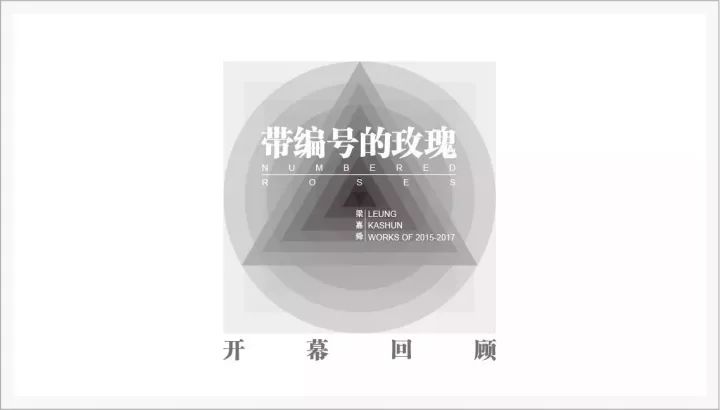
The exhibition.
Exhibiting 10 representative works of mine from the past 3 years.
All of these works address some sort of issue at some stage in the process.
more about solving technical problems.
Because.
I've always insisted on that when it comes to painting:
Ideas need technical support.
Without technical support, ideas have nothing to fall back on.
The works presented in this exhibition are:
Starting with finding your own artistic language.
to the gradual refinement of this language system.
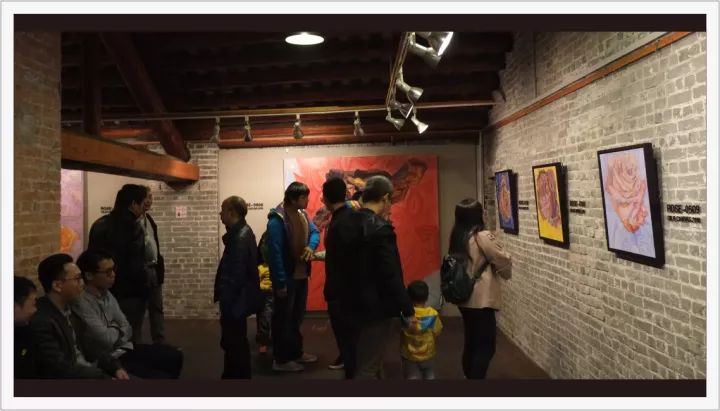
A number of audience members asked questions:
"What do these numbers mean?"
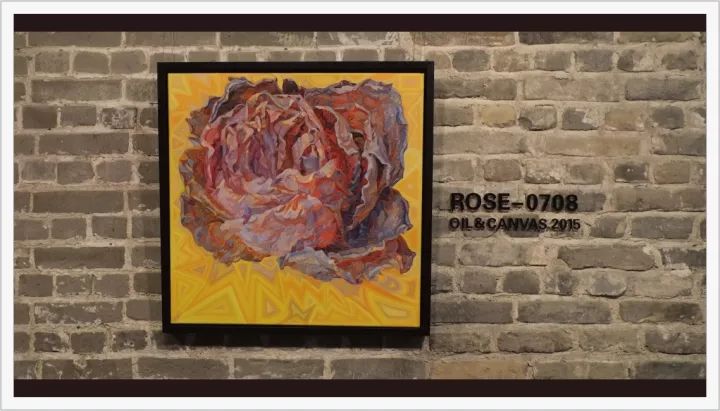
Regarding the numbering.
It's like our ID numbers,
License plate number,
Same passport number.
It is the symbol that identifies them.
Sure.
These numbers have a practical intent.
But I think that
The key to appreciating a work of art is that
in which the viewer makes a variety of interpretations.
This is very interesting.
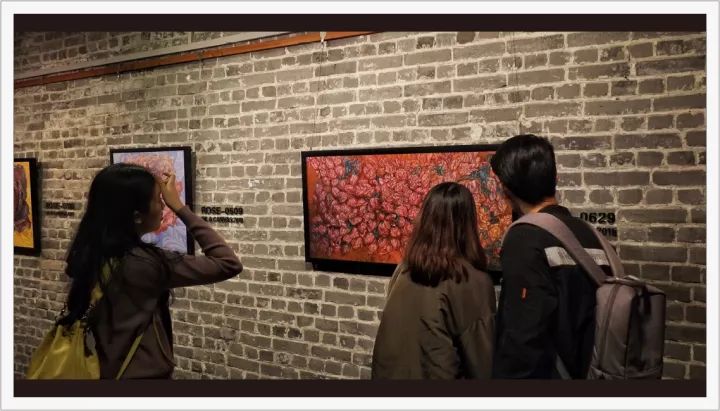
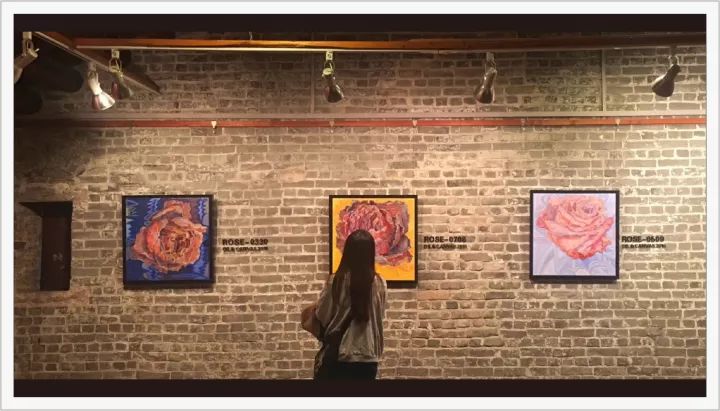
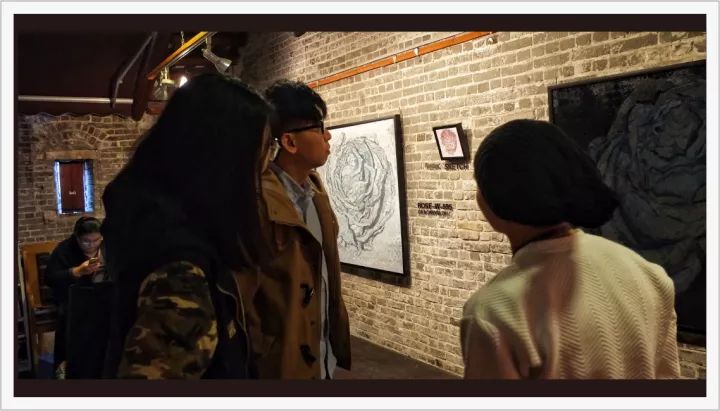
On site.
Many of the audience members were exposed to the artwork for the first time.
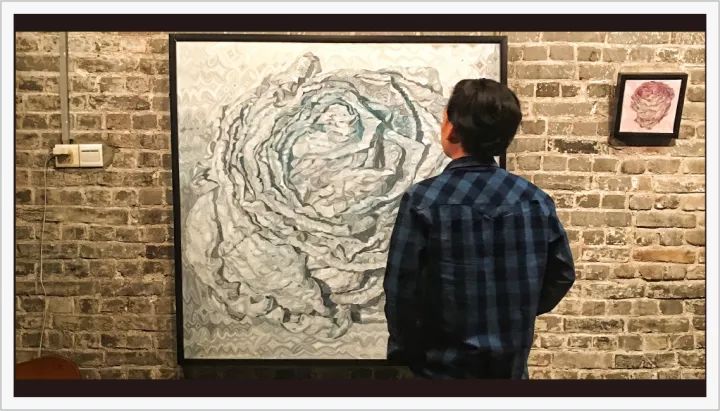
And there's the spectator who thinks about the work for half a day.
Question:
"Where is Rose's number?"
That's a good question.
But I have no intention of "writing" the number on the canvas.
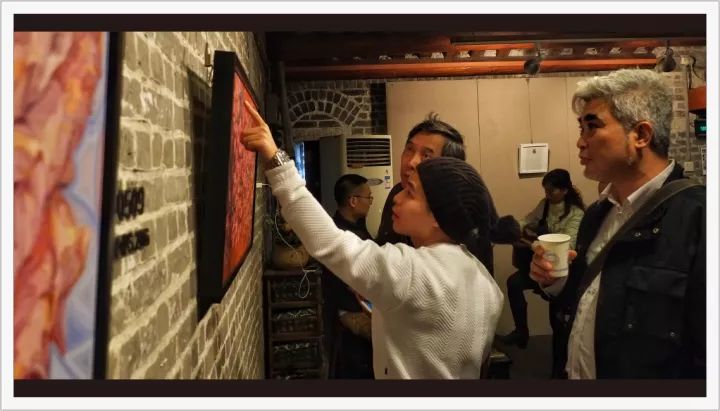 Presentation of the work to the guests.
Presentation of the work to the guests.
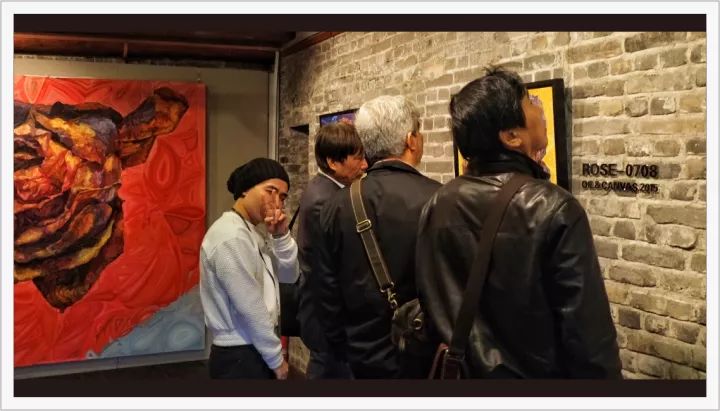 "YEAH ..."
"YEAH ..."
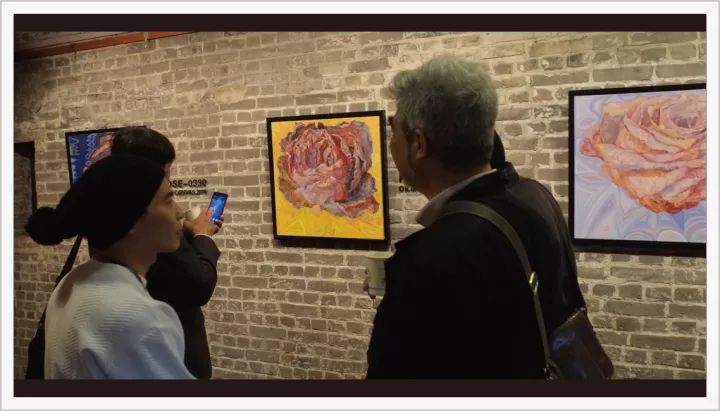
Interacting with Mr. Wong Sung Ho on the spot.
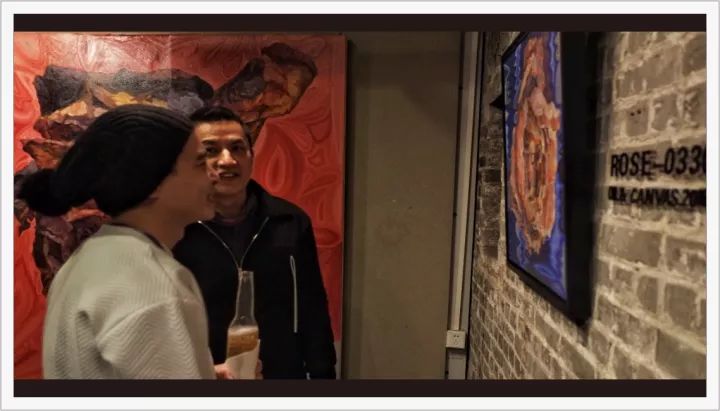
Talking with Mr. Jiang Shan on the spot.
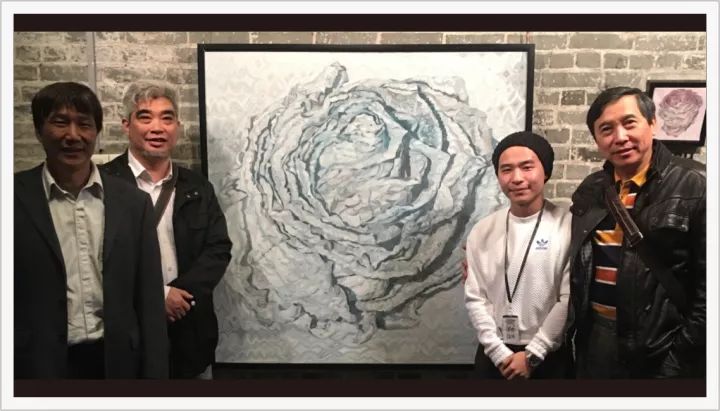
Group photo with Mr. Yip Kwok Sun (first from left), Mr. Wong Sung Ho (second from left) and Mr. Kwok Tsz (first from right).
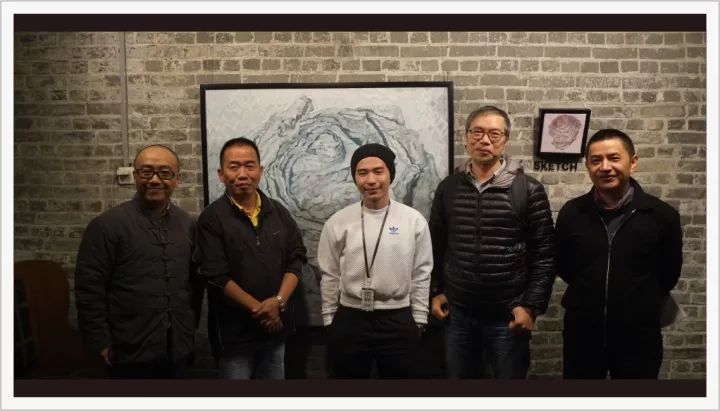
Group photo with Mr. Dai Xiaole (first from left), Mr. Yang Wenwei (second from left), Mr. Tang Xiaoming (second from right) Mr. Jiang Shan (first from right).
Thank you to the curator, Mr. Wong Chung Ho;
Thanks to my college teachers;
As well as thanking the guests for visiting the exhibition.
Thank you to those who made a point of visiting.
Thank you for the BEN gallery.
Of course, I'm most thankful for that:
My parents.
The above is an excerpt from the opening day of the exhibition.
Thank you to the teachers and friends who came to see the work on the opening day and later.
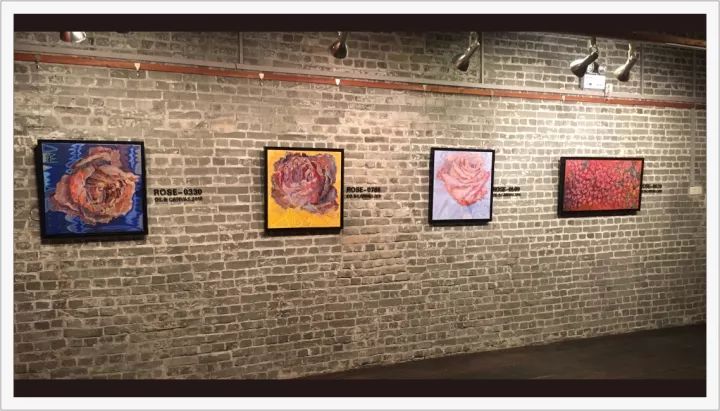
Finally.
It is a piece of my own creative experience:
That's me.
Text|Leung Ka Shun
There are two main roads connecting the east and west sides of Guangzhou - Dongfeng Road and Huanshi Road. Between these two busy arteries is a university - Guangdong University of Technology (Dongfeng Road Campus) - from which I graduated.
This school is the same as other colleges and universities - there is a wall, this wall seems to be a temporary barrier to the reality of the world; temporary barrier to the hustle and bustle of the downtown area, so that students can enjoy the last time on campus before facing the community. Inside that wall, I, like other students, was full of curiosity and hope for the world outside the wall, because outside that wall was the most colorful and exciting side of Guangzhou.
After graduation, I moved from the school dormitory to the unit dormitory. Coincidentally, the dormitory assigned by the organization was also located in a place that also showed the busyness of Guangzhou - a place with extremely congested traffic - Luochongwei. Even more coincidentally, there was also a wall there.
There is a passenger terminal in Lo Chong Wai, and people come and go from this terminal every day, either with high expectations or with disappointment, and judging from their behavior, these people are not rich. After the passenger terminal, turn a corner, walk a short distance, to the unit dormitory, into the walls of the dormitory, it will give people a sense of stability. This sense of stability is perhaps what people outside the walls are looking forward to.
I, who went from that fence to this one, it felt safe and at the same time, it masked aspects of this secular society that I didn't understand.
Looking out from the dormitory entrance to the fence, I felt like a grasshopper. Unlike Qi Baishi's grass bugs, in the grass bugs painted by Qi Baishi, I saw a world of relaxation. Obviously, I was in a busy and noisy world. So, in my dormitory in Luochongwei, I drew a number of grass bugs, which I created by borrowing from Qi Baishi's works, but the difference is that I gave these bugs a steel coat and a cartoonish look.
It wasn't until later that I moved with my cat to the unwalled Member's Village, and for a year thereafter, I continued to use grass bugs as a mother lode for my creations-until one night's late-night snack.
It took me more than three years to move from the west side of Guangzhou (Luochongwei) to the east side (Yuancun), during which I watched my friends struggle for their careers in this metropolis; I watched my classmates being forced to leave Guangzhou to find another way out, and it wasn't until the old friend who spent two years with me in Yuancun told me, "I can't see a way out here." Soon after, he left Guangzhou and returned to his hometown.
In the days before he left Guangzhou, he and I snacked together almost every night. This habit remained unchanged until after he left.
One night, while sitting at a roadside barbecue stall eating skewers, I heard the young man at the next table say to his partner, "I came out to work after finishing elementary school, and I've been in Guangzhou for two years, and I'm so tired every day, and the manager of the store even deducted five dollars from me!" These words touched me, and brought my mind to distant memories - to the first class of my life: the teacher's first question to us was: "Classmates, when you grow up, what is your ideal?" I remember when the most students answered is a scientist, police, astronauts and other noble professions. The teacher went on to say, "Then, you should study hard and work hard for your ideals." I believe that the young man who was docked five dollars of his wages was also asked a similar question. Thinking back to the answer we gave to the teacher, it seems that we are now far from our original vision, and we all have things in our minds that we can't do as we would like.
So, I decided to paint lust.
Unlike their parents' era, they left this wall and entered that wall, work, marriage, housing... all of this is so taken for granted; all of this is so well organized. And we are in this era: money, love, affection, friendship, career and other things in the hope and disappointment, ideal and reality and other emotions entangled with each other intertwined. There are all sorts of inexorable decisions to be made, and in this case, I think everything is a matter of love - this is the reason why I chose the rose as the main theme.
There is a lyric in Eason Chan's "Under Mount Fuji" that says: I am not rare, and I will disappear after a week in the street.
After completing "ROSE-0629" I never drew any more flower leaves or flower stalks. Because we have our own number since we came to this world, a unique number, which says: "I am rare." We are all unique and irreplaceable - that's me.
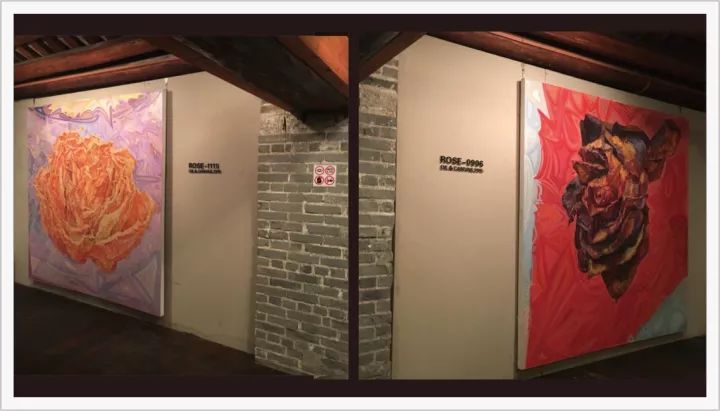
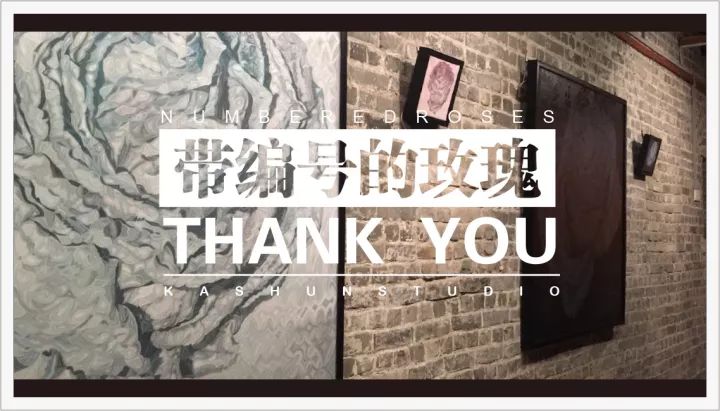
This is original content, if you want to reproduce it, please indicate the source.

WeChat Sweep
Follow this public number

